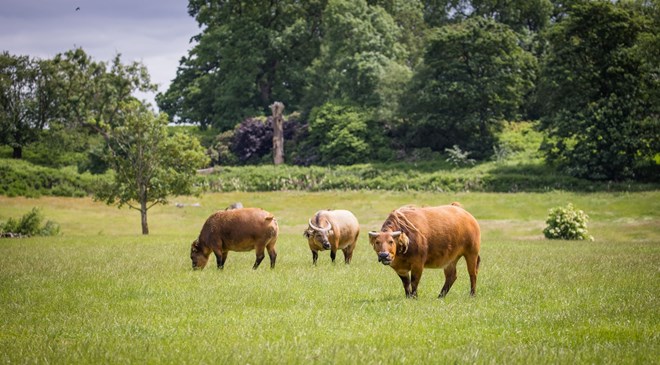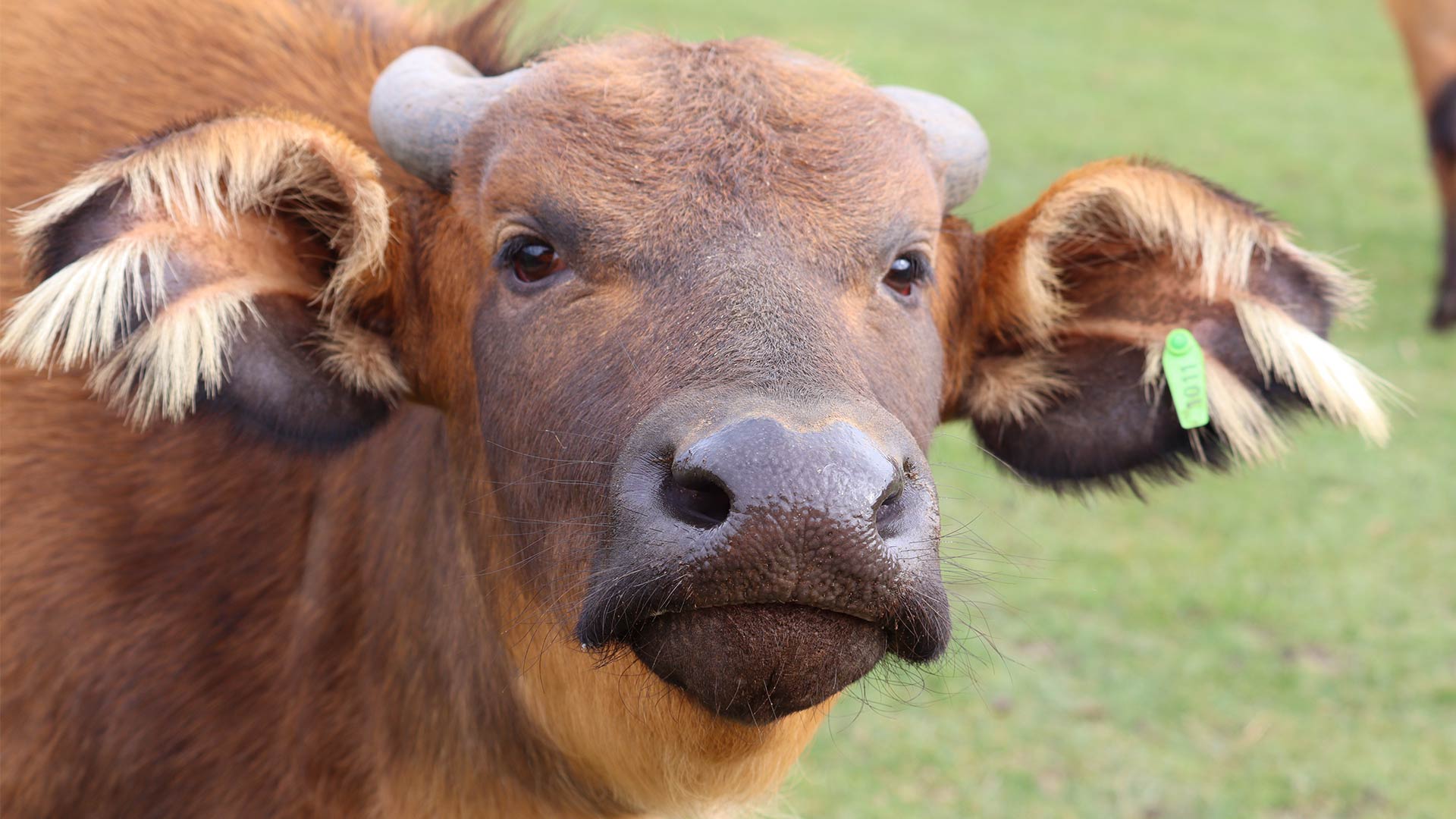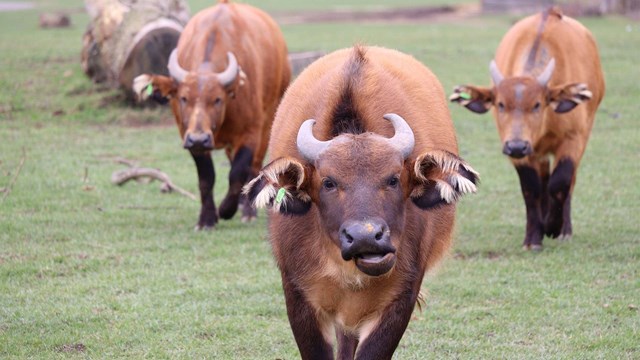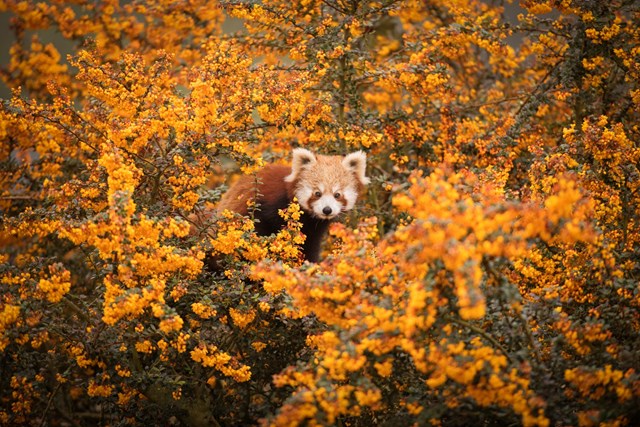
Overview
Dwarf forest buffalo live in small herds of eight to 20 individuals consisting of related females, their offspring and one or more males. The dwarf forest buffalo at Woburn Safari Park can be seen in the Savannah section of the Road Safari. There she roams in the 50 acre exhibit with a number of other African species including Grevy's zebra, Southern white rhino and common ostriches, among others.

All about us
| Distribution: | Native to West and Central Africa |
|---|---|
| Habitat: | High densities of open grassland within the equatorial forest and the lower densities of continuous forest |
| Height: | 1.3m |
| Weight: | 265 to 565 kg |
| Gestation Period: | 11 to 12 months |
| Lifespan: | 30 years |
| Threats: | Hunting, habitat loss, disease and predation by leopards |
About us
Scientific name: Syncerus caffer nanus
Male and female forest buffalo both have horns and they can grow up to 40cm in length. They are swept backwards as an adaptation to forest life as horns that were swept forwards or upwards could snag on branches and hinder their escape from predators. Their horns completely cover their forehead providing protection for when the males have pushing contests. Their coat can range in colour from bright red to dark brown and males especially will darken with age.

Small but mighty...
In the wild dwarf forest buffalo live in small groups - herd sizes can be as small as three and rarely over 30.
At under five feet tall she is one of the smaller animals that you can see in the African Savannah area of the Road Safari, and dwarf forest buffalos are actually the smallest of the subspecies of African buffalo!

